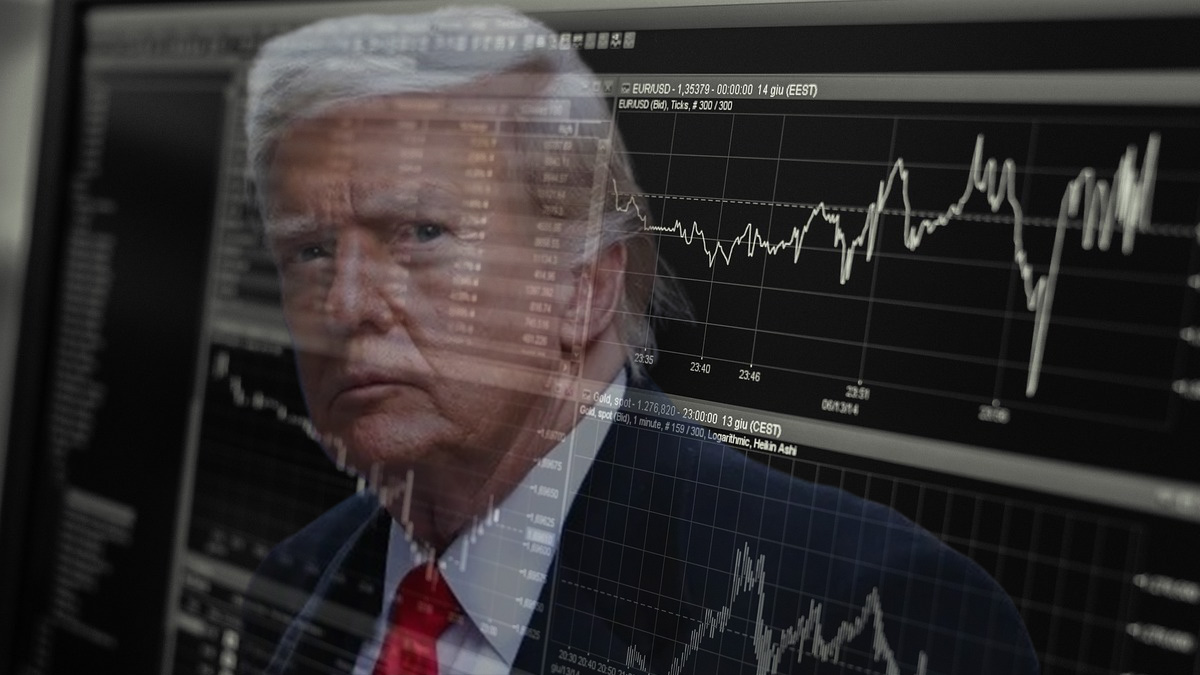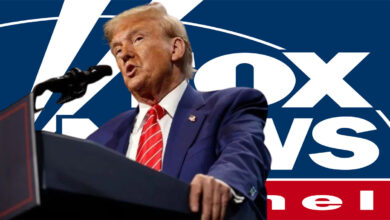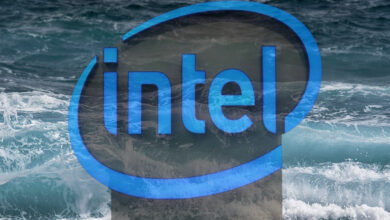US Stocks Plunge and Political Uncertainty surrounding Trump’s candidacy

On Wednesday, US stocks took a significant hit. Concerns over big tech earnings weighed heavily on the market. Rising Treasury yields added to the pressure, leading all three major indexes to decline.
Investors are feeling jittery. The prospect of former President Donald Trump winning the upcoming election is causing unease. Wall Street is increasingly preparing for this possibility. Polls show a tight race, with Trump’s chances gaining traction in political betting markets since the start of the month.
Tech giants have been under scrutiny. Investors worry that disappointing earnings reports could signal broader economic issues. As these companies face challenges, their stock prices react sharply, impacting overall market sentiment.
Rising Treasury yields also play a crucial role. Higher yields often lead investors to shift their focus from stocks to bonds, creating further downward pressure on equities.
Political uncertainty adds another layer of complexity. With an election looming, volatility is expected to persist as investors weigh potential outcomes and their implications for the economy.
The Impact of Increased Tariffs on Domestic Manufacturing
In recent discussions, Steven Ricchiuto, chief US economist at Mizuho Securities, highlighted a straightforward yet significant economic strategy proposed by Candidate Trump. This approach centers on raising import tariffs to boost domestic manufacturing. But what does this mean for consumers and the economy as a whole?
Understanding Import Tariffs
Import tariffs are taxes imposed on goods brought into a country. By increasing these tariffs, the government aims to make imported products more expensive. This can lead to several outcomes:
- Encouraging Local Production: Higher tariffs can incentivize companies to produce goods domestically rather than relying on cheaper imports.
- Job Creation: As manufacturing ramps up in the U.S., job opportunities may increase in various sectors, from production lines to logistics.
- Price Increases for Consumers: While the goal is to revive local industries, consumers may face higher prices for everyday goods. When import costs rise, businesses often pass these expenses onto shoppers.
The Inflation Factor
Ricchiuto pointed out that these tariffs could reverse the current trend of goods deflation. Deflation refers to a decrease in prices, which has been beneficial in keeping inflation near the Federal Reserve’s 2% target. However, if consumer goods become pricier due to increased tariffs, inflation could rise again.
This creates a complex scenario:
- Short-Term Pain for Long-Term Gain: Consumers might feel the pinch initially as prices go up.
- Economic Growth Potential: If domestic manufacturing thrives, it could lead to sustainable economic growth and stability over time.
What’s Next?
The debate around tariffs is multifaceted. On one hand, they aim to protect American jobs and industries; on the other hand, they risk straining consumer budgets and complicating inflation dynamics.
As policymakers weigh these options, it’s essential for consumers and businesses alike to stay informed about potential changes in pricing and availability of goods.
The Economic Ripple Effect of Trump’s Policy Proposals
In recent discussions, the potential impact of former President Donald Trump’s policy proposals has come into sharp focus. If enacted, these policies could lead to a significant increase in government borrowing. This is a stark contrast to Vice President Kamala Harris’ plans, which are expected to maintain more fiscal discipline.
Borrowing and Investment Risks
The implications of increased borrowing are profound. When the government borrows more, it raises concerns about its ability to repay that debt. Investors begin to view government-issued securities as riskier. As a result, they demand higher interest rates to compensate for this perceived risk.
This shift can create a domino effect throughout the economy. Higher interest rates on government bonds can lead to increased costs for businesses and consumers alike. The ripple effect touches everything from mortgages to corporate loans.
Rising Treasury Yields
Recent data shows that Treasury yields have been on an upward trajectory. The 10-year note recently surpassed 4.25%, marking its highest level since July. This surge in yields has added pressure on stock markets, creating an uneasy atmosphere for investors.
Stock Market Reactions
As bond yields climb, stock investors grow anxious. The tech-heavy Nasdaq Composite felt the brunt of this anxiety, plummeting by 1.8%. Meanwhile, both the S&P 500 and Dow Jones Industrial Average saw declines of 1.1%. For the Dow specifically, this translated into a staggering drop of 450 points.
At one point during trading on Wednesday, the Dow was down over 600 points—a worrying trend that marked three consecutive days of losses for U.S. markets. By late afternoon, all three major indexes settled slightly lower but remained under pressure.
The Fragile State of the Equity Market: What Lies Ahead?
The equity market is currently walking a tightrope. José Torres, a senior economist at Interactive Brokers, has raised alarms about the lurking headwinds that could shake investor confidence. His insights highlight a crucial point: while earnings expectations for next year remain optimistic, the focus now shifts to forward guidance.
Understanding Forward Guidance
Forward guidance refers to the communication from companies about their future performance. In today’s market, this information is more valuable than past results. Why? Because investors are eager to know how companies plan to navigate challenges ahead.
Tech Sector Under Pressure
The tech sector has felt the brunt of recent selloffs. Major players like Nvidia and Apple saw declines of 3.6% and 3%, respectively, as they approach their earnings reports next week. Investors are on high alert, hoping these reports will reveal whether hefty investments in artificial intelligence have paid off.
The AI Investment Gamble
Artificial intelligence is touted as a game-changer for many industries. However, the question remains: have these investments translated into stronger financial performance? As tech giants prepare to unveil their results, all eyes will be on their ability to deliver.
What Should Investors Do?
In such a fragile market, caution is key. Here are some strategies for navigating these turbulent waters:
- Stay Informed: Keep an eye on upcoming earnings reports and company announcements.
- Diversify Investments: Spread your investments across sectors to mitigate risks.
- Focus on Fundamentals: Look beyond short-term fluctuations and assess long-term growth potential.
Dow Jones Faces Pressure from McDonald’s and Boeing
The Dow Jones Industrial Average took a hit on Wednesday, primarily influenced by troubling news from two major companies: McDonald’s and Boeing.
McDonald’s Under Fire
Shares of McDonald’s fell by 4% in the afternoon trading session. The fast-food giant faced severe backlash after an E. coli outbreak linked to its popular Quarter Pounders. This incident has resulted in one tragic death and ten hospitalizations in the western United States.
Investors are concerned about the potential fallout. Health issues can lead to decreased customer trust, affecting sales significantly. The fast-food chain is now under scrutiny as it works to address this crisis.
Boeing’s Struggles Continue
Adding to the Dow’s woes, Boeing reported substantial quarterly losses that disappointed investors. New CEO Kelly Ortberg acknowledged the challenges ahead, stating, “It will take time to return Boeing to its former legacy.”
This statement reflects a tough road for the aircraft manufacturer. Investors are wary as they ponder how long it might take for Boeing to regain stability and confidence in its operations.
Market Reaction
The combined impact of these two companies has created a ripple effect throughout the market. Investors are closely monitoring how both firms respond to their respective crises.
In times like these, market sentiment can shift rapidly. Traders are advised to stay informed and consider broader economic indicators alongside company-specific news.
Investors Face Mixed Signals on Federal Reserve’s Next Moves
Investors are navigating a complex landscape as they assess the Federal Reserve’s future actions. Recent economic data has been robust, prompting traders to reconsider their expectations. Many are now questioning whether the central bank will keep interest rates elevated for a longer period than initially thought.
This uncertainty is causing ripples in the market. The strong economic indicators suggest resilience, but they also raise concerns about inflation and growth sustainability. As a result, volatility is likely to persist.
Torres highlights this potential turbulence. He warns that we may see further yield curve steepening. This means the difference between short-term and long-term interest rates could widen, signaling shifting investor sentiment.
In this environment, investors must remain vigilant. Market fluctuations can create both opportunities and risks. Staying informed is crucial for making sound investment decisions.
As the Fed deliberates its next steps, mixed signals will continue to shape market dynamics. The key takeaway? Prepare for continued volatility ahead. Understanding these trends can help investors navigate uncertain waters effectively.







